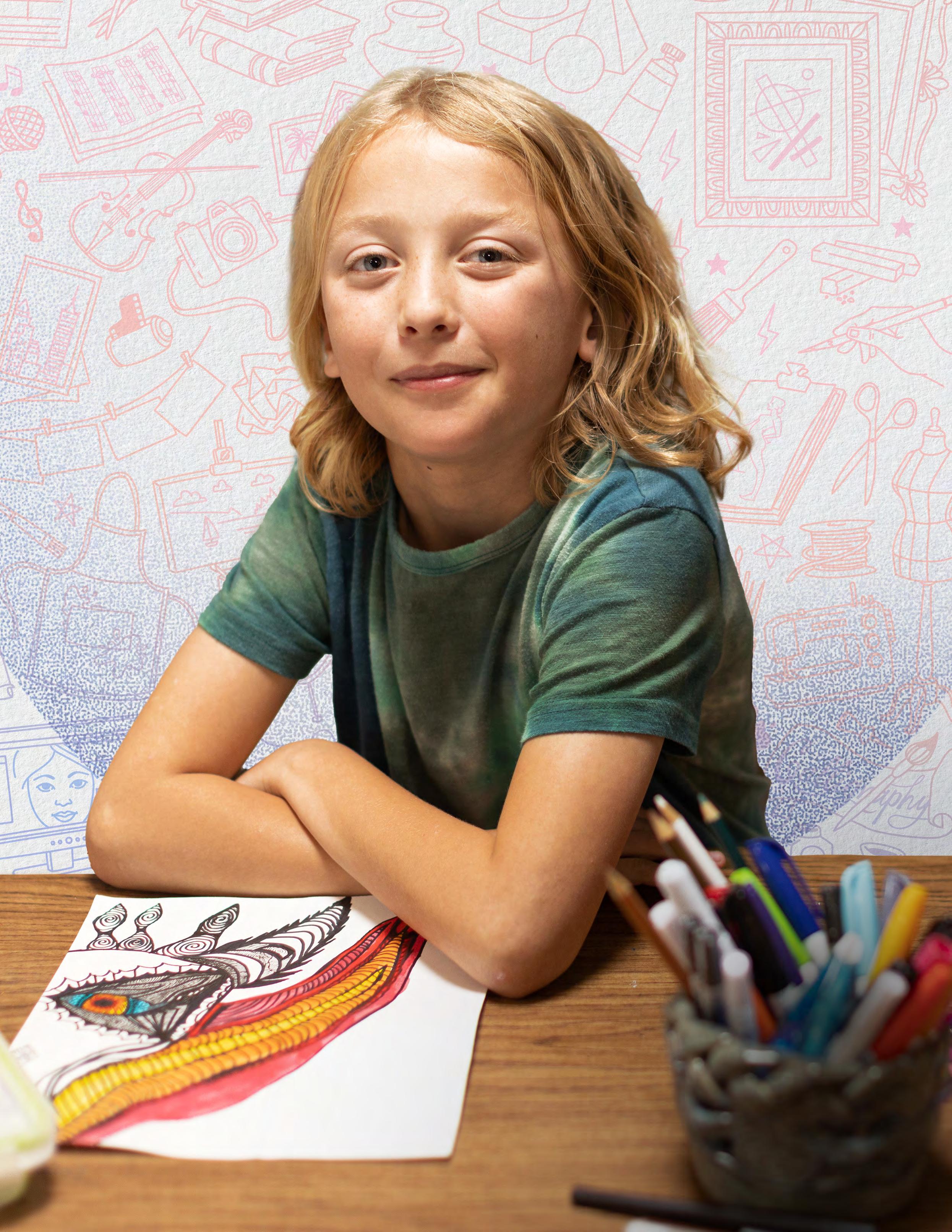
ART CAN A PROGRAM OF THE TEXAS CULTURAL TRUST




The Texas Cultural Trust, established in 1995, is a 501(c)(3) nonprofit organization dedicated to supporting and increasing access and awareness for the arts across the state.
Programs of the organization include the Texas Medal of Arts Awards, Arts Access, Art Can, Texas Young Masters, Texas Women for the Arts, and Partners in the Arts.
The Trust’s efforts are amplified by partners who are instrumental in the success of leading a cohesive voice for arts and culture in Texas.
To be the leading voice for the arts in education, advocacy, and economic impact in Texas, spotlighting the artistic excellence of our state.
A vibrant Texas where the arts inspire excellence.
Through Art Can, the Trust conducts research and publishes data to quantify the impact of the arts and creative sectors on the economy, education, culture, and health and well-being of Texas.
Published every biennium, the State of the Arts Report demonstrates the unequivocal impact the arts have in shaping the future of Texas. In this way, the State of the Arts Report serves as a resource for Texas artists, arts organizations and advocates, educators, policymakers, parents, philanthropists, and others to increase support and funding for arts and culture in the state.

Since 2008, the Texas Cultural Trust has gathered leading researchers to quantify the social, educational, and economic impact of the arts in our state and then presented their findings in a biennial publication, the State of the Arts Report (SOTAR). The 2023 State of the Arts Report expands on this tradition, augmenting the research to include data culled from intersections in the arts and health sectors.
Public support for our creative sector helps ensure that all Texans have access to the arts, regardless of their economic status, education, or what part of the state they live in. The Texas Cultural Trust’s research demonstrates how the impact of public grant funding for Cultural Districts far surpassed the initial public investment, earning a 2 to 1 return on investment for the state’s economy. The steady increase and interest in cultural events throughout the state makes clear how much Texans value these investments in their communities.
As a means of connection, inspiration, and enrichment, the arts were and remain an invaluable salve. However, in terms of pandemic recovery, the state’s arts and culture sector also proved itself an indispensable engine of economic growth, helping jumpstart Texas’ economy by generating critical tax revenue, creating much-needed jobs, appealing to businesses, improving the quality of life for all Texans, and ensuring that visitors enjoy their time in the Lone Star State. It is largely because of the arts that Texas outpaced national averages for pandemic recovery and that our economy remains one of the strongest and fastest growing in the U.S.
The 2023 State of the Arts Report is a resource for Texas artists, arts organizations and advocates, educators, policymakers, parents, philanthropists, and others to increase support, awareness, and funding for arts and culture in the state.
I extend our appreciation to the many supporters and contributors of this report, including Leslie and Jack Blanton, Jr., the Houston Methodist Center for Performing Arts Medicine, the University of Houston College of Fine Arts, Dr. Brent Hasty, Travis James, Shay Kulha, Joseph Shuffield, and Dr. Robin Ward. Thank you for bringing this study to reality. Finally, thank you to the board and staff of the Texas Cultural Trust and our many partners who, through their leadership, endorse the need for this research.
Leslie Ward Board Chair, Texas Cultural Trust

The 2023 State of the Arts Report gives credence to our conviction, at the Texas Cultural Trust, that Art Has Power. More specifically, that the Arts and Culture Industry has the power to boost the Texas economy, enhance our children’s education, unite our communities, and improve our health and well-being.
"Art is unquestionably one of the purest and highest elements in human happiness,” wrote John Lubbock, more than a century ago. Today, there are statistics to support this sentiment. For example, we now know that attending one cultural event a month reduces the risk of developing depression by 48%. The 2023 State of the Arts Report highlights such research while calling attention to the growing array of evidence-based art therapies and treatment programs that are enhancing the lives of Texans.

The Report also continues the work we began in 2021 by delving further into the numbers that demonstrate both the importance of arts education and the rectifiable disparities in access in Texas schools. When it comes to effecting positive change, there is nothing more powerful than information.
The research presented reveals not only a direct correlation between a child’s access to the arts and their academic outcomes and achievements, but also the extent to which arts curricula aids in the development of core competencies and interpersonal skills. These include creativity, innovation, critical thinking, problem-solving, communication, and collaboration—all of which better prepare Texas students for the 21st century workforce, enhancing the likelihood of career success and meaningful contributions to the Texas economy.
We at the Texas Cultural Trust hope this year’s Report will inspire, educate, and reinforce the arts' place in human health, optimism, and resolve. Most importantly, we hope that the 2023 State of the Arts Report will serve as a resource for arts advocacy in Texas. With continued investment in the arts, our state will be poised for even greater economic prosperity in the years to come.
Heidi Marquez Smith Chief Executive Officer, Texas Cultural Trust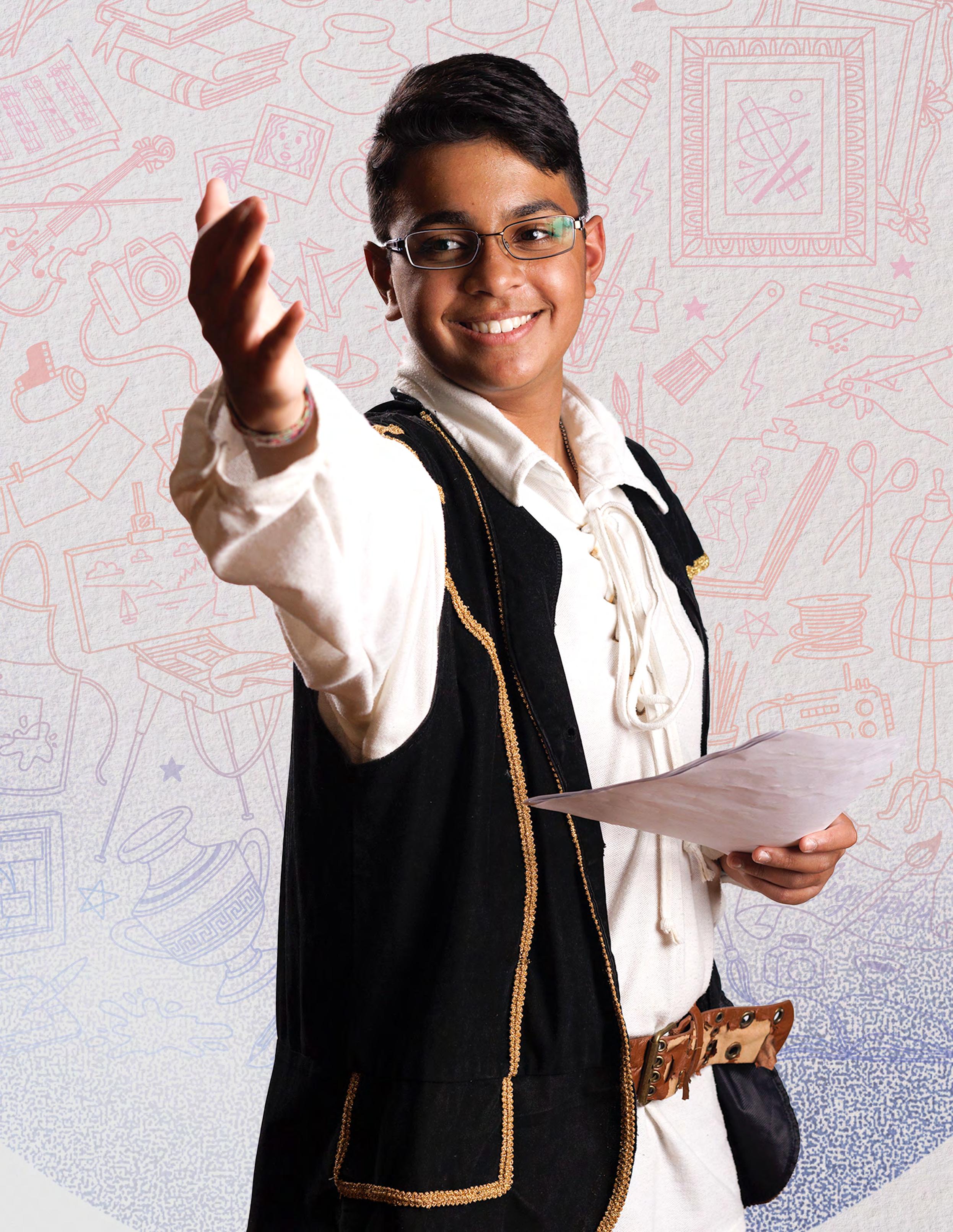
Texas high school students enrolled in more arts courses had better attendance, higher pass rates on standardized tests, and were more likely to attend college than their peers taking only the minimum arts requirement.
• Up to 112% more likely to earn an exceptional score on standardized tests
• 20% more likely to attend college
• 42% more likely to attend a four-year college or university
Arts education prepares the 21st century workforce by developing core competencies and interpersonal skills: creativity, innovation, critical thinking, problemsolving, communication, and collaboration. Across Texas, nearly 845,000 people are employed in creative careers, which represents 1 in 15 jobs.
The Texas Arts and Culture Industry has grown more than 30% over the past decade, generating $6 billion for the Texas economy and nearly $380 million in state sales tax revenue.
The impact of public grant funding for Cultural Districts far surpassed the state’s initial investment. Cultural Districts create jobs, generate significant tax revenue, boost tourism, attract business, and revitalize communities.
1 in 4 visitors in Texas participate in cultural tourism. Arts and culture tourists stay longer, bring more people, and spend more money than non-cultural tourists.
The arts and Creative Arts Therapies are improving physical, mental, and emotional health, encouraging healthy behaviors, reducing stress, and increasing social interactions. Attending just one cultural event a month reduces the risk of developing depression by 48%.
Music therapy can decrease post-traumatic stress disorder symptoms by 30%.
Listening to a prescribed music playlist can improve blood flow through damaged parts of a stroke patient’s brain by 18%.

“Drawing helps me be more expressive and a better problem solver.”
In Texas, high school students enrolled in more than one arts course are more likely to attend college .

Research conducted by the Texas Cultural Trust shows that academic achievement, school attendance, graduation rates, and higher education attendance rates are significantly improved for students who are highly engaged in the arts. Highly engaged students took four or more arts courses, while minimally engaged students took only the required one course.
Texas students highly engaged in the arts are between 34% and 112% more likely to earn an exceptional score* on standardized tests than students who are minimally engaged. Students who enrolled in more arts courses had better school attendance. This effect was even greater for at-risk students, economically disadvantaged students, and English language learners with a nearly 2% higher attendance rate than their peers taking fewer arts courses, which is the equivalent of 3 additional school days annually and more than 12 additional school days over the course of their high school career.
Students who graduated high school took a greater proportion of arts courses than students who did not graduate. Students who were highly engaged in the arts were 20% more likely to attend college and 42% more likely to attend a four-year institution than those who completed only the minimum requirement.
In Texas, across all subjects, students who are economically disadvantaged were more likely to pass standardized tests when highly engaged in the arts.
112 % are up to more likely to earn an exceptional score on standardized tests
National studies conclude that 94% of students with a high level of arts engagement went to a four-year college, versus 7% of those with a low level of arts engagement.
Notably, students who took four years of arts coursework outperformed their peers who had half a year or less of arts coursework by 58 points on the verbal portion and 38 points on the math portion of the SAT.
42 %

are more likely to attend a four-year college or university
Teenagers and young adults of low socioeconomic status (SES) who earned more arts credits showed better academic outcomes. In particular, they earned higher test scores in math, science, and writing. They also demonstrated higher rates of college enrollment and lower dropout rates

73 %
favor increased state funding for arts education

84 %
agree the arts are a very important part of a student’s education
-WINELL HERRON
“The research is clear that engaging in the arts increases a student’s opportunity to be more successful in life, academics and their community.”
Arts-based instruction is unique in that it has been shown to directly improve students’ academic success by indirectly strengthening learning skills. These effects can be particularly significant for at-risk populations, including low-income students and English language learners. However, access to arts education is far from equitable from one Texas school district to the next.
In this Report, arts access is measured by:
• fine arts course enrollment
• fine arts course offerings
• number of full-time (FTE) fine arts teachers
• student to fine arts teacher ratio
Texas public schools are required to provide equal education to all students, regardless of demographic or socioeconomic status. However, suburban and low-poverty students have far greater arts access and offerings in their schools than rural and high-poverty students.
On average, students in high-poverty schools have less access to the arts than students in low-poverty schools.
High-poverty campuses have fewer arts courses and fewer arts teachers.
Teachers at high-poverty schools serve
32 % more students than teachers at low-poverty schools

Elementary: Music, theatre, and visual arts Texas Essential Knowledge and Skills (TEKS) must be provided for all elementary students. Teachers are not required to be arts certified and there are no standards for how arts courses should be provided.
Middle School: Middle school students are expected to complete one arts course. Districts are required to offer three of the four arts disciplines (dance, music, theatre, and visual arts).
High School: To graduate, students are required to complete one arts credit. Districts are required to offer at least two of the four arts disciplines.
In Texas, students who complete more arts courses

21% more likely to attend college
2-8% more likely to pass standardized tests in
46% more likely to attend a four-year college or university
14% more likely to attend college
21% more likely to attend a four-year college or university
20% more likely to attend college
46% more likely to attend a four-year college or university
42-112% more likely to earn an exceptional score
1-6% more likely to pass standardized tests
18-71% more likely to earn an exceptional score
1-7% more likely to pass standardized tests
34-125% more likely to earn an exceptional score
than students who complete the minimum arts requirement.
While all fine arts TEKS are part of the required curriculum, districts and campuses have the flexibility to implement instruction in a variety of arrangements according to their resources. *
School districts are required to provide sufficient class time for students to learn all of the required TEKS, and students are required to demonstrate proficiency in all three arts disciplines at each grade level. In Texas, 94% of elementary campuses self-report that they are offering fine arts classes.
Elementary arts education may either be provided by • a general education teacher, who in most cases is also responsible for providing instruction in math, science, social studies, and English language arts, or • an arts-certified teacher, who exclusively focuses on fine arts classes: music, theatre, or visual art.
However, who provides the instruction and how it is delivered differs from campus to campus.
In Texas, there are 2.42 million students enrolled in grades 1-6. Of those students,
1,603,748 have a music-certified teacher
1,100,302 have a visual art-certified teacher
35,017 have a theatre-certified teacher
In Texas, 18,290 teachers provide arts education instruction for elementary grade students.
13 % 23.5 %
certified in multiple arts music-certified theatre-certified visual art-certified
%
%
11 % of courses are in Music
7 % of courses are in Visual Art
1 % of courses are in Theatre
< 1 % of courses are in Dance
SEL skills are essential for students to develop more confidence in themselves as both intellectuals and creators. Research shows that strong SEL competencies improve overall achievement by 11%.

Arts education is synonymous with social and emotional learning (SEL). SEL skills include:
SELF-AWARENESS
SELF-MANAGEMENT
SOCIAL AWARENESS
RELATIONSHIP SKILLS
RESPONSIBLE DECISION-MAKING
The arts teach collaboration and communication skills.
The arts reinforce kindness, sharing, and empathy.
The arts encourage practice, persistence, and patience.
Students become more confident and better leaders.
Students maintain these behaviors in their day-to-day interactions.
Students learn to persevere and become more self-aware.
providing regular access to the arts reported a more positive and cohesive learning environment, citing increased peer collaboration and improved social skills in
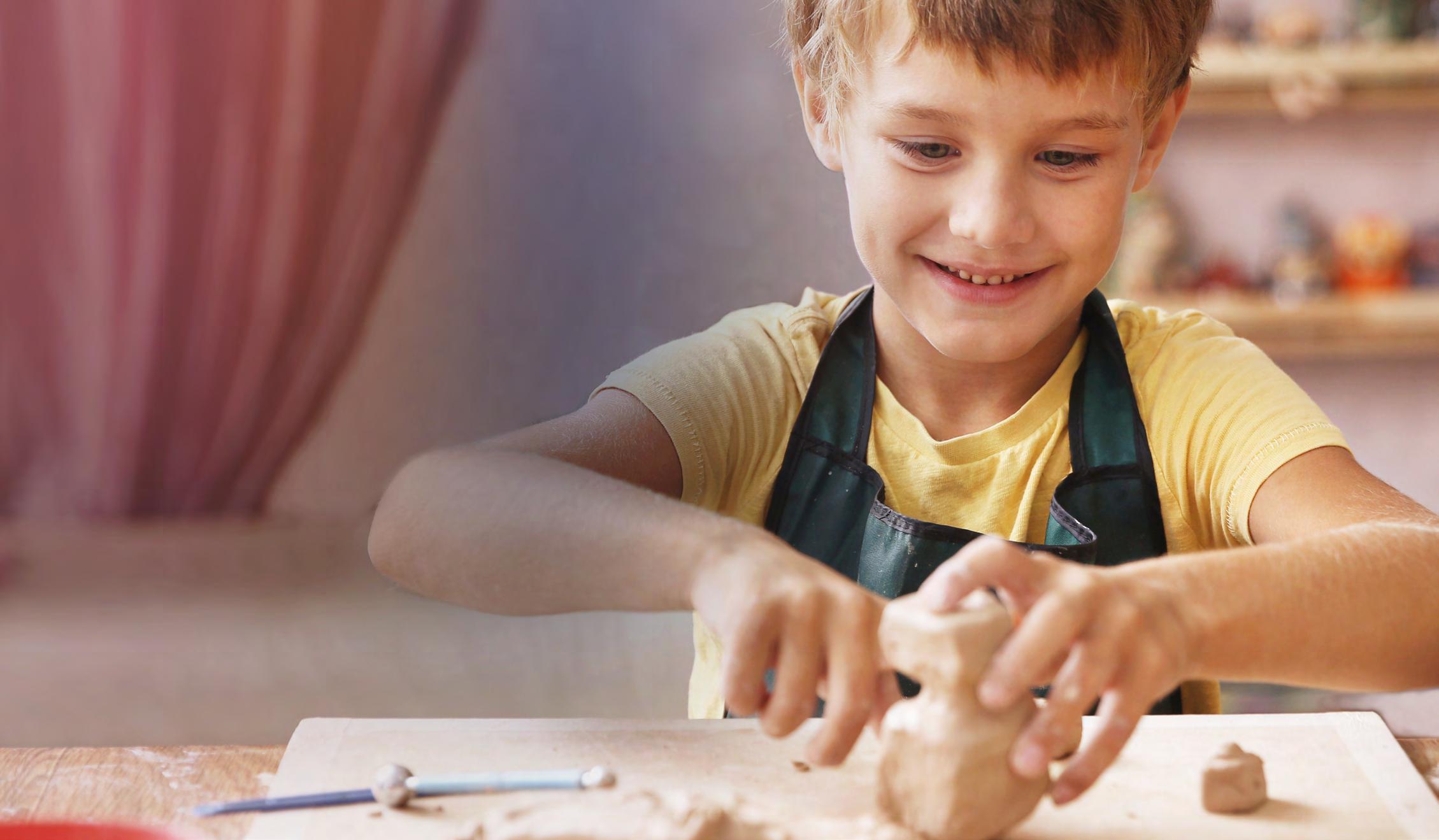
Increase the likelihood of high school graduation
Improve readiness for postsecondary education
Directly impact career success
Positively impact family and work relationships
Improve mental health
Reduce criminal behavior
Source: Hawkins et al., 2008; Jones et al., 2015
Produce more engaged citizens
“Teachers
the classroom.”– Study by the John F. Kennedy Center’s Changing Education Through the Arts Program
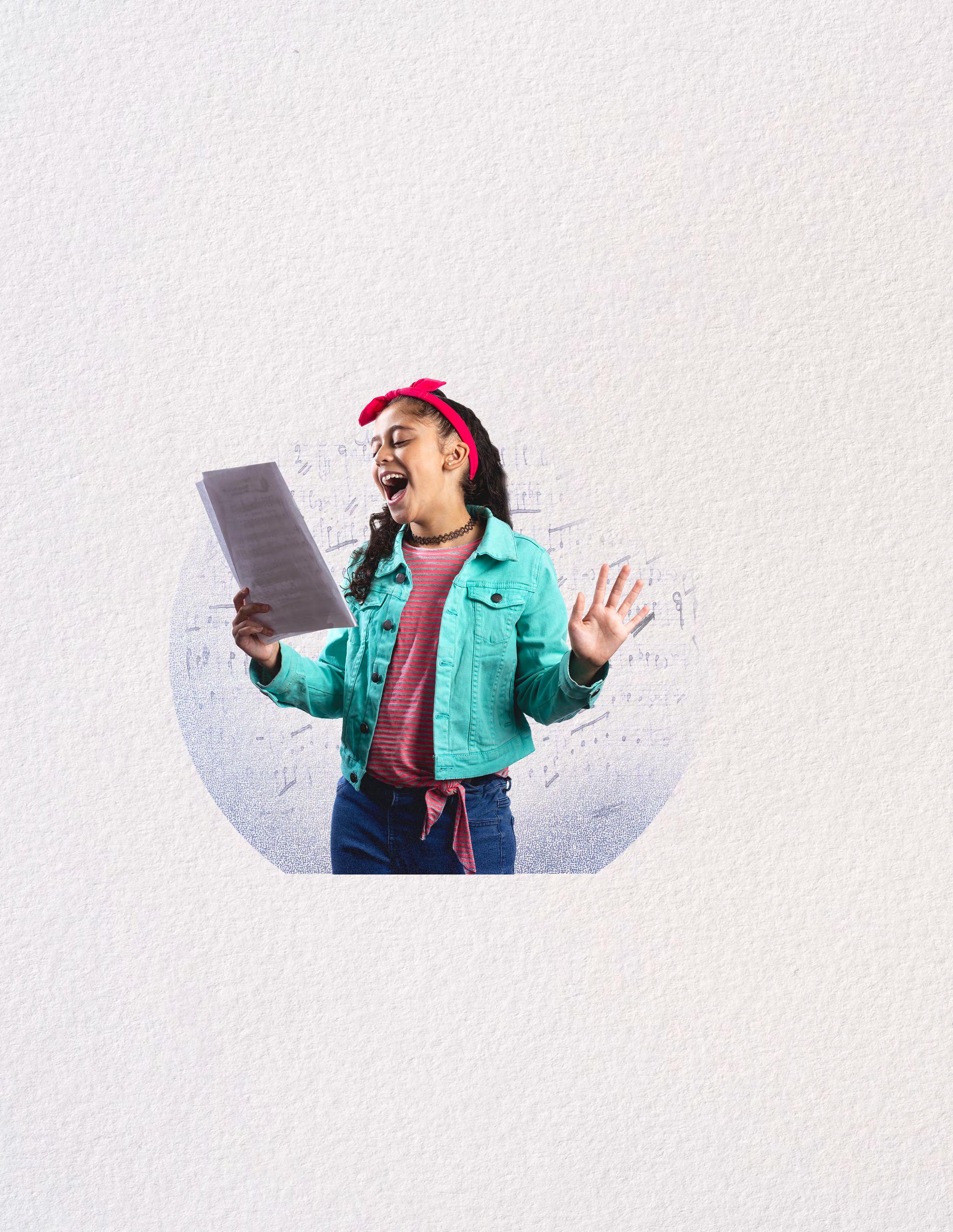
“Singing helps me come out of my shell, release stress, and feel more confident.”JESSICA AGE 10
The arts prepare critical thinkers for the workforce and generate $6 billion for the Texas economy.

The economic future of Texas requires a workforce that is adaptable, creative, and prepared for the challenges of a rapidly changing world. The arts strengthen the Texas economy by preparing students for creative careers, generating significant tax revenue, and boosting tourism.
A well-rounded education is key to building a 21st century workforce. Students who participate in the arts are better prepared to succeed in their careers and contribute to the Texas economy.
The Texas creative sector employs nearly 845,000 Texans. Almost 1 in 15 Texas jobs are part of the creative sector. According to forecasts from the Texas Workforce Commission, creative sector employment is projected to increase by over 22%, creating 205,000 net new jobs, by 2030.
Nearly
845,000
Texans are employed in creative careers
Nearly
1 in 15 Texas jobs are creative careers
Texas Creative Careers by Major Occupation Division (2021)
Major Group Code

15 - 0000
17 - 0000
19 - 0000
27 - 0000
Texas Employment Occupations
Computer and Mathematical Occupations
Architects, Surveyors, and Cartographers
Life, Physical, and Social Science Occupations
Arts, Design, Entertainment, Sports, and Media Occupations
Total Employment
Source: U.S. Bureau of Labor Statistics
411,390
224,440
93,980
114,850
844,660
The creative sector is defined using occupation codes that focus on the innovation workforce; these are jobs that rely heavily on critical thinking, innovation, and creativity. Special attention was given to occupations that are in high demand, are portable, and are found in a diverse set of industry sectors. In 2021, the average annual wage for creative careers was approximately $87,000, compared to $52,000 for non-creative careers. This represents a 67% wage premium for creative workers.

In Texas, 14,000 Arts and Culture Industry businesses create, distribute, and sell products and services nationally and internationally.

30 % GROWTH in the Arts and Culture Industry
nearly $ 380 MILLION in state sales tax
Taxable revenue from the core Arts and Culture Industry has grown by 30% over the past decade. The Arts and Culture Industry generated $6 billion in taxable sales for the Texas economy, totaling nearly $380 million in state sales tax revenue in 2021.

The Texas Moving Image Industry Incentive Program (TMIIIP) is designed to build the economy through the moving image industry by creating jobs in Texas. Over the past 15 years, the incentive program has attracted $1.95 billion of in-state spending. The TMIIIP has a 504% return on investment. For every $1.00 paid in grant funding, $5.04 is spent in-state.

“If we invest in arts education and a robust film incentive, we will create the storytellers of tomorrow and transform our cultural economy.”
The arts' contribution to the economy spans a wide range of cultural activities, vocations, and organizations, including music groups, museums, photographers, and others. Using the Bureau of Economic Analysis's (BEA) arts and cultural definition, there are two main categories of activity:
• Core Industries are the originators of ideas and content.
• Supporting Industries produce and spread arts and culture.
Texas arts and cultural economic activity generated $65.8 billion in gross domestic product. Representing 3% of total state employment, 395,000 Texans produced arts and culture goods and services while earning over $33.6 billion in compensation.
$4,656,255,378
Arts and Cultural Production employees earned over $ 33.6 BILLION in compensation
Arts and cultural economic activity generated $ 65.8 BILLION in gross domestic product
$4,506,001,820
$4,669,233,785
$4,905,152,939
$5,095,599,168
$5,348,470,734
$5,509,355,953
$5,552,780,913
$5,597,128,658
$5,737,511,231
$6,056,028,814
$4,244,769,441
$6,024,337,593
$291,015,961
$281,625,114
$291,827,112
$306,572,059
$318,474,948
$334,279,421
$344,334,747
$347,048,807
$349,820,541
$358,594,452
$378,501,801
$265,298,090
$376,521,100
Arts and Cultural Production Satellite Accounts (ACPSA) Industry Employment
U.S. Department of Commerce Texas Metro Statistical Areas
Metro Areas
Largest Metro Areas
Source: U.S. Department of Commerce, Economics and Statistics Administration, U.S. Census Bureau
2021 Estimated Sales Tax Collection Generated by the Arts and Culture Industry for the15 Largest Metro Areas
Metro Area/Division
Amarillo
Austin - Round Rock
Beaumont - Port Arthur
Brownsville - Harlingen
Corpus Christi
Dallas - Plano - Irving
El Paso
Fort Worth - Arlington
Houston - Sugar Land - Baytown
Killeen - Temple - Fort Hood
Laredo
Lubbock
McAllen - Edinburg - Mission
San Antonio
Waco
Taxable Sales Local Sales Tax Generated (1% Sales Tax Rate)
$34,003,558
$579,354,044
$25,103,195
$36,093,369 $48,076,767
$1,083,675,705
$78,967,666
$354,725,114
$961,375,508
$32,728,875
$5,895,248
$36,974,087
$84,492,643
$377,387,527
$22,997,330
$340,036 $5,793,540 $251,032 $360,934 $480,768
$10,836,757 $789,677 $3,547,251
$9,613,755 $327,289
$58,952
$369,741
$844,926
$3,773,875
$229,973
Source: TXP, Inc.; Texas Comptroller of Public Accounts
Research by the Office of the Governor, Economic Development and Tourism showed that arts and culture tourists spend more and stay longer than leisure tourists.
37 %

of nonresident overnight leisure travelers engaged in cultural activities while on vacation
Pre-pandemic, nearly 37% of nonresident overnight travelers visiting Texas and 25% of all travelers, both resident and nonresident, engaged in cultural tourism, including listening to live music, visiting historic sites and museums, sightseeing, or seeing a show. This translates to roughly 1 in 4 visitors participating in cultural tourism when traveling in Texas.
Texas has outpaced national averages for recovery throughout the pandemic. In 2021, total travel and tourism spending surpassed $76.1 billion, and in April 2022, travel spending exceeded pre-pandemic levels. Road trips in Texas that included an overnight stay also showed pre-pandemic activity levels. Still, the Arts and Culture Industry was disproportionately affected by the pandemic, and the level of tourism activity in 2021 reflects this impact. Texas Tourism 2015-2021
The Texas Commission on the Arts (TCA) is the public entity in Texas dedicated to advancing our state economically and culturally by investing in a creative Texas. In 2005, the Texas Legislature authorized the TCA to designate Cultural Districts in communities across Texas. These designated areas use existing cultural landmarks and resources to generate economic development and community revitalization. Currently, there are 52 TCA-designated Cultural Districts in 39 cities across Texas. When funded by the Texas Legislature, the TCA provides competitive grants to support projects within Cultural Districts.
The Texas Cultural Trust commissioned a 2020 study of four Cultural Districts that received a total of $542,000 in public grant funding from the TCA. This study revealed an overall impact of $52.3 million in economic activity. In total, the case studies generated a 2 to 1 return on investment in state tax revenue. The impact of public grant funding for Cultural Districts far surpassed the state’s initial investment. Cultural Districts create jobs, generate significant tax revenue, boost tourism, attract business, revitalize communities, and improve the quality of life for all Texans.
$542,000 INVESTMENT =
$52.3 MILLION

ECONOMIC ACTIVITY
GENERATE BUSINESS REVITALIZE COMMUNITIES
ATTRACT TOURISTS

Texas Commission on the Arts Cultural District Grant Case Studies

Kimbell Art Museum: Renoir: The Body, The Senses
Abilene Cultural Affairs Council: Lights, Camera, Action
Houston Ballet: The Nutcracker
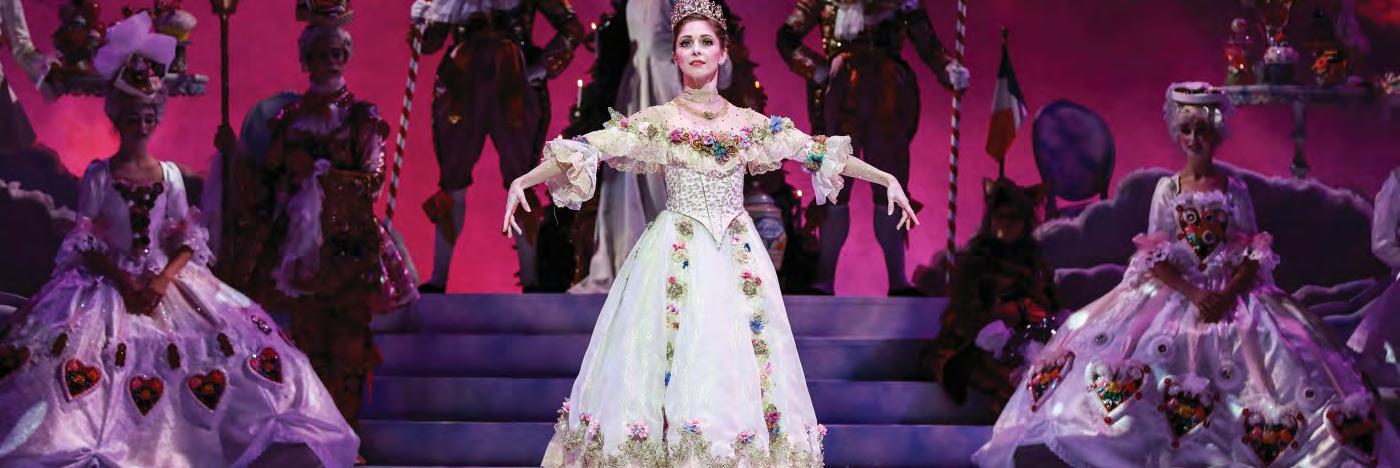
City of El Paso: Chalk the Block
Total
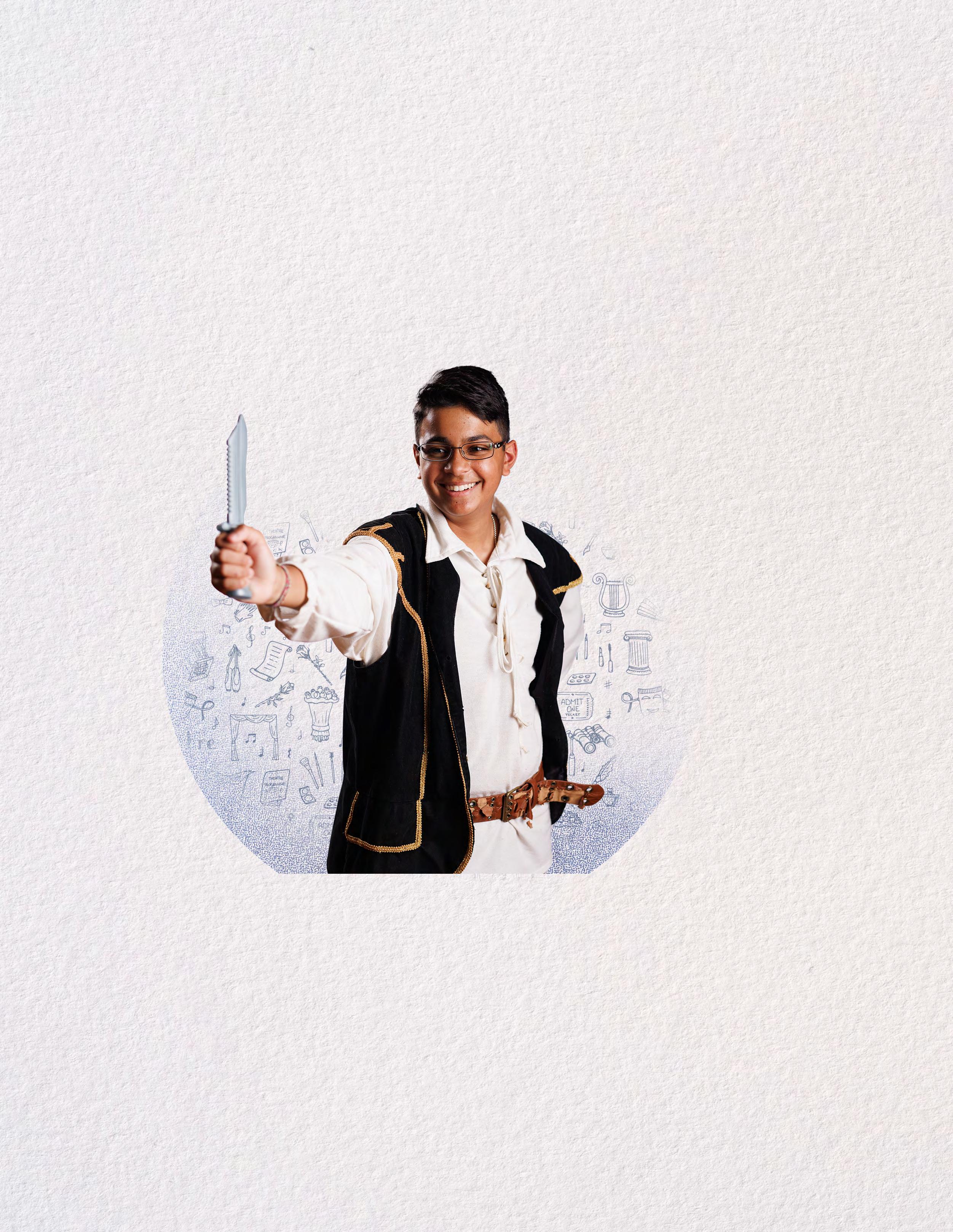
“Theatre allowed me to open up and improve my mental health.”
DIRECTOR, MALÚ AND CARLOS ALVAREZ CENTER FOR TRANSPLANTATION, HEPATOBILIARY SURGERY AND INNOVATION, UT HEALTH SAN ANTONIO
The arts enhance overall physical, mental, and emotional health .
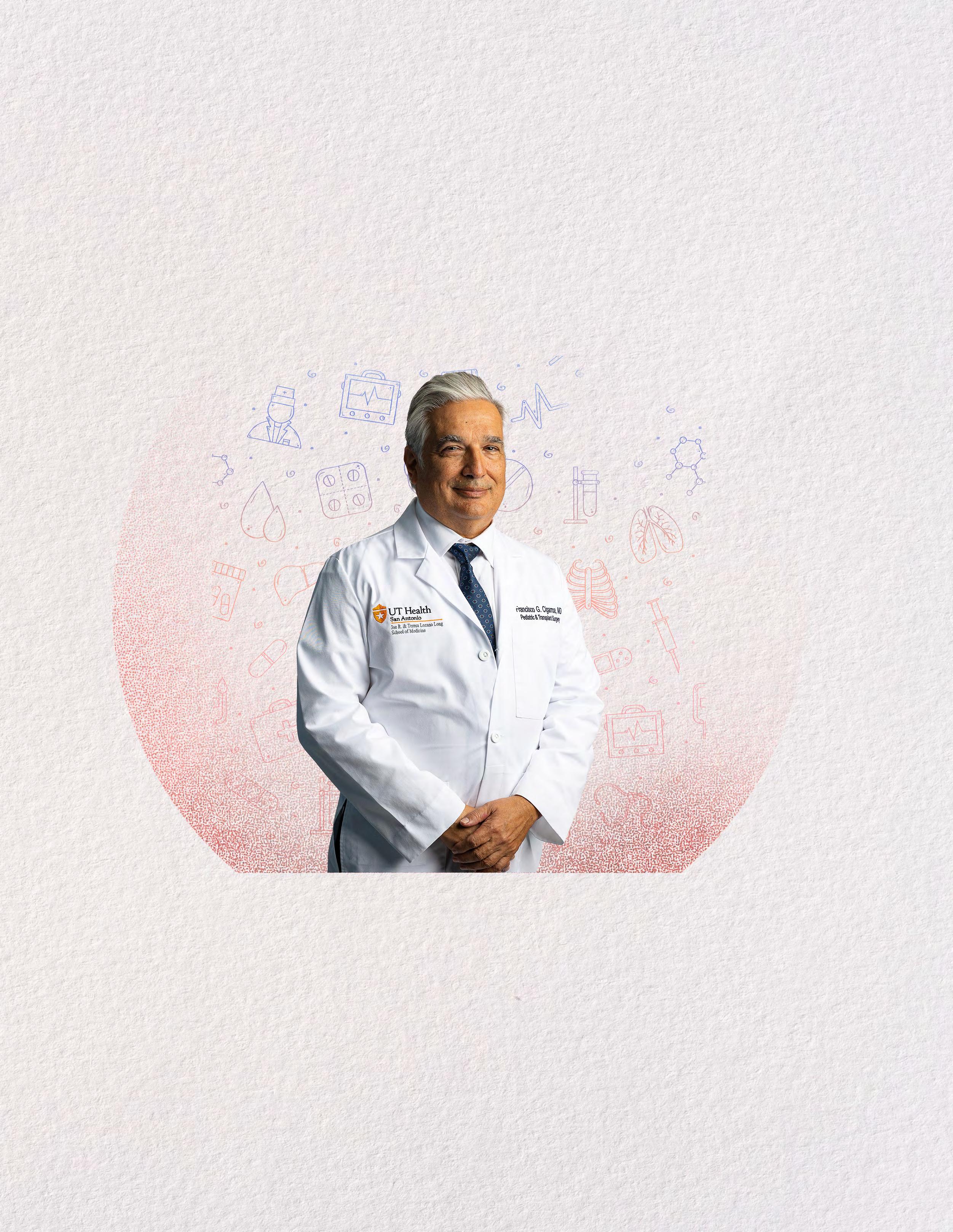
Arts in Health is a field dedicated to utilizing the power of the arts to enhance health and well-being in various healthcare institutions and community contexts.
Therapies
Creative Arts Therapies is a term used to describe healthcare professionals who use arts-based interventions and creative processes to optimize health and treat illness. These therapies include music, visual art, dance/movement, poetry, and drama.
Arts in Public Health
describes communitybased programs that use the arts to promote wellbeing, strengthen social cohesion, and facilitate arts-based messaging.
Texas Children’s Hospital works with patients and families by utilizing music for diverse functional goals like physiological symptom management, psychosocial support, rehabilitation, and grief and bereavement services.

Come Together Houston, a community arts and health partnership at the University of Houston, focuses on arts experiences that encourage conversation around vaccine hesitancy.

Austin Classical Guitar works with oncology patients to provide opportunities for self-expression using music throughout the patient’s treatment experience.
Arts in Health thrives in Texas. The Texas Medical Center is the world’s largest medical center and a hub for the intentional and transformative inclusion of the arts. Additionally, Texas boasts excellent degree programs that lead the way for the next generation of health and well-being professionals.
The intersection between arts and health is growing across our state. Music
Texas music therapy jobs are projected to increase 20 % by 2028

The Music Therapy Degree is an undergraduate degree that will fill a significant need in the industry landscape and aims to prepare music therapists to be clinician-researchers.
The Arts in Health Certificate provides theoretical classes and practical experience at local health and human services facilities.

Stroke, Parkinson’s, and cognitive decline can greatly impact quality of life. The arts can help treat, mitigate, and manage the effects of these conditions.
Over 70,000 Texans have a stroke each year. Strokes occur when there is a blockage of blood flow in the brain, causing a loss of oxygen and nutrients, which can result in lasting damage. Research conducted at the Houston Methodist Center for Performing Arts Medicine (CPAM) utilizes fMRI technology, high-powered brain images that track blood flow, to show that listening to a prescribed music playlist can improve blood flow through damaged parts of a stroke patient’s brain and can increase functional connectivity by 18%.
Over 50,000 Texans are diagnosed with Parkinson’s disease (PD), a nervous system disorder that affects a patient’s ability to control muscle movement.
Dance for PD is an evidence-based program using dance and movement to supplement medicinal protocol for Parkinson’s patients. The classes utilize innovative teaching approaches that explore movement and music while creatively addressing symptom-specific concerns like balance, cognition, depression, and physical confidence.

Studies show that patients who participate in Dance for PD once per week have:
Improved motor measures, gait speed, and tremor reduction
Increased quality of life
Less motor impairment than nonparticipants
Slower motor and non-motor PD symptom development over three years
Source: Phillips & Becker, 2019

Studies have proven that reducing caregiver stress through expressive arts helps to continue high-quality care.Photo courtesy of Stomping Ground Comedy Theater.
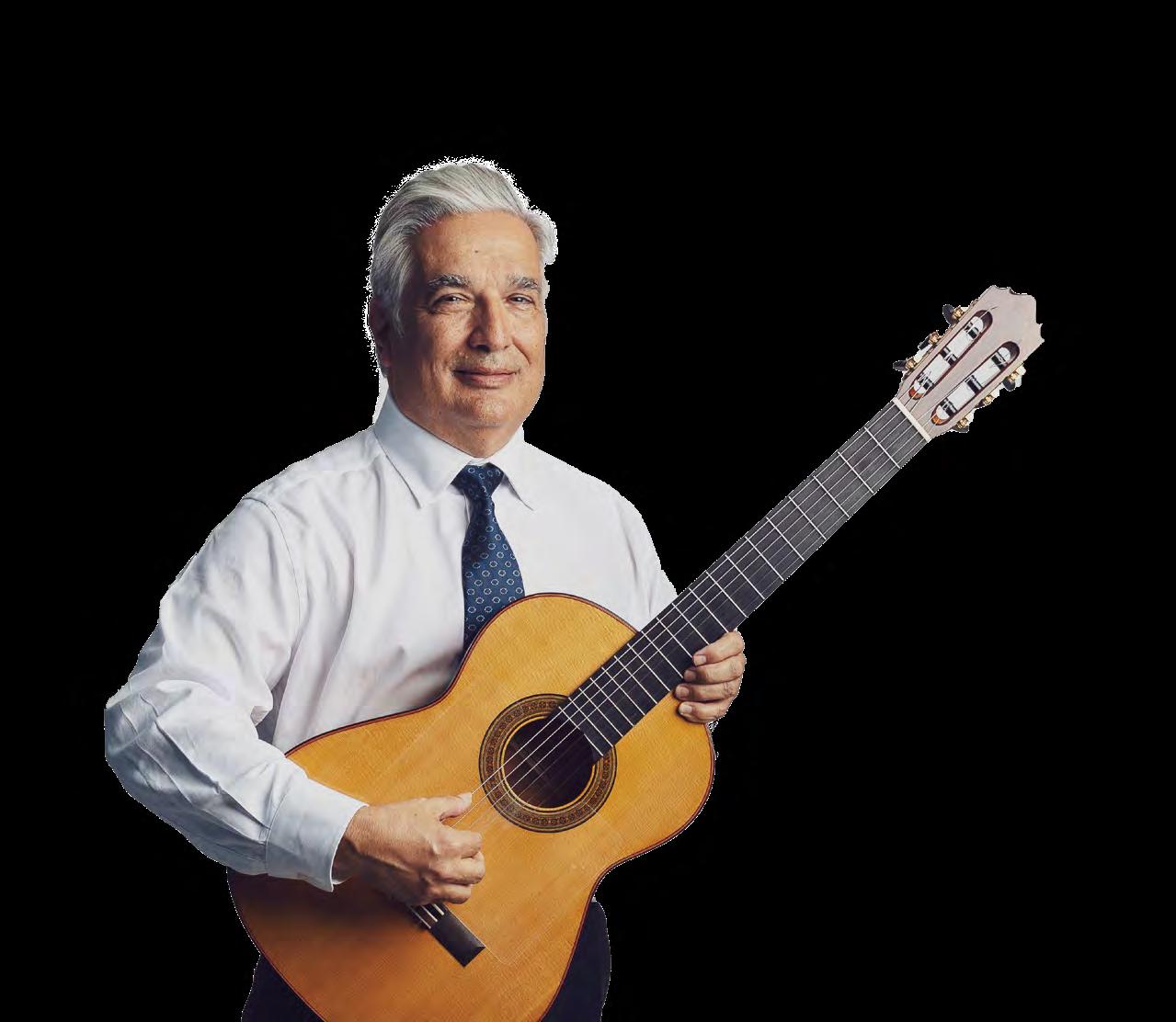
Burnout is a cumulative condition describing general exhaustion and lack of interest or motivation.
Compassion fatigue is the negative physical, emotional, and psychological costs of working in a helping capacity. A caregiver may feel that they want to keep caring, but are overwhelmed from being exposed to the trauma of others. Compassion fatigue consists of burnout and secondary traumatic stress.


Lowered caregiver stress
Lowered compassion fatigue
Lowered mental exhaustion

Health providers faced unprecedented stressors throughout the COVID-19 pandemic, with critical care providers showing the highest burnout rate (Medscape NPBS, 2021). The Center for Performing Arts Medicine partnered with the Cardiovascular Intensive Care Unit at Houston Methodist Hospital to design an innovative arts-based intervention to reduce stress and combat burnout.
The Splatter Paint Room allowed healthcare workers to release tension through the physical art experience of throwing paint. Employees selected a pre-made playlist designed by a music therapist and used paint to express themselves on 6-foot canvases. The paintings were collected to create a mosaic art piece, which stands as a permanent reminder of how the team came together to make something beautiful out of a challenging experience.
“I’ve always believed that there’s a great intersection between medicine, humanities, and the arts.”Photos courtesy of Houston Methodist Center for Performing Arts Medicine.
During COVID-19, the World Health Organization found a 25% increase in depression and anxiety across the globe. The arts can be used to help combat depression and anxiety through opportunities for connection and selfexpression. The arts enhance overall physical, mental, and emotional health, encourage healthy behaviors, reduce stress, and increase social interactions. Attending a cultural event once a month reduces the risk of developing depression by 48%.
The demographic of Texans aged 65 and older is expected to more than triple by 2050 (Adams, 2016). With age and cognitive decline, challenges with thinking, memory, concentration, and other brain functions may reduce quality of life.
Project CHROMA, an interdisciplinary initiative at Rice University and a National Endowment for the Arts Research Laboratory site, assesses the effects of a music creativity curriculum on older adults. The curriculum engages participants through music listening, theory, performance, and creative activities. Program results show improvements in cognitive function, which is essential for attention and memory.

The Center for Performing Arts Medicine (CPAM) is a fully integrated arts in medicine program within the Houston Methodist hospital system. The center has grown to be one of the largest, most diverse Arts in Health centers in the nation. CPAM has continued to grow through the pandemic for patient and provider programs.
According to CPAM, Creative Arts Therapies add tangible value to the hospital system by:
Decreasing a patient’s length of stay
Lowering self-reported anxiety
Reducing the use of pain medicines

Pass on these findings. Tell your fellow Texans about the important impact the arts have on education, the economy, health and well-being, and our way of life.
Learn about arts education access in your community by visiting ArtCanTexas.org.
Encourage your school board members and elected officials to support access to the arts and arts education. Use our tools at ArtCanTexas.org.
Learn more about how to promote and support the arts by visiting TXCulturalTrust.org, or by contacting the Texas Cultural Trust directly.
Stay informed about the state of the arts in Texas by following the Texas Cultural Trust on social media.
While there are great areas of promise, there are also many areas for improvement in arts access. We invite you to join us in our efforts to ensure equitable access to the arts for all Texans.
Join Partners in the Arts at TXCulturalTrust.org/PIA.

















The mission of the Texas Commission on the Arts (TCA) is to advance our state economically and culturally by investing in a creative Texas. TCA supports a diverse and innovative arts community in Texas, throughout the nation, and internationally by providing resources to enhance economic development, arts education, cultural tourism, and artist sustainability initiatives. For more information, visit arts.texas.gov.


Texans for the Arts (TFA) is a highly effective, non-partisan, statewide arts advocacy organization that provides coordinated information about legislative activity related to arts issues and organizes advocacy efforts in order to protect and increase public funding for the arts at the state, national, and local levels. For more information, visit texansforthearts.com.
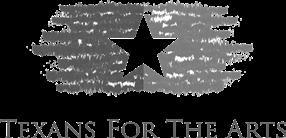
Actus Audio
The Adderley School
Alice + Olivia LLC
Amber Allen
Guadalupe Alvarez
Lauren Anderson
Kris Andrews
Anheuser-Busch
Brendon Anthony
Ann Ash
AT&T
Marilyn Augur
Austin Film Society
Barbara Averitt
Sean Aye
Allison Ayers
Margaret Ballantyne
Amy Barbee
Jil Barnes
Arlene Barnett
Susanna Bartolomei
Jessica Bates
Baylor Scott & White Health
Connie Beck
Laura and John Beckworth
Lorraine Benini
Ray Benson
Bergdorf Goodman
Christy Berry
Amy Maxwell Biard
Julia Blailock
Elizabeth Blanton
Ginger Blanton
Kelli and Eddy Blanton
Leslie and Jack Blanton, Jr.
Ellen Blasio
Laurie and Marvin Blum
Michelle Bonton
Elise Boyan
Dale Brock
Paula Brockway
Janis Brous
Sabrina Brown
The Brownsville Community Foundation
Clifton Burse
Jamayla Burse
Bob Bursey
Sharron Buschman
Sarah and Ernest Butler
Shannon W. Callewart
Jeanne Campbell
Mary Campbell
CAPTRUST
Carolina Herrera LTD
Mary G. Carroll
Rod Caspers
Nora and Robert Castro
CenterPoint Energy
Camille Scioli Chambers
Louise Chapman
Chevron
Sandra L. Chunn
City of San Antonio
Department of Arts and Culture
Darlene Clark
Melinda L. Clement
Wendy Cluley
The Commodore Perry Estate
Kay and The Honorable
Byron Cook
N.S. Cook
Paula and Ken Cook
Wendie M. Cook
Covert AutoGroup
Lawton Cummings
Cara Darden
Kimberly Darden
Misty Davis
Mitzi Davis
Dell Children’s Foundation
Ito Deutsch
Dickinson Wright PLLC
Nancy Dinerstein
Patsy Donosky
Double A Labs
Stephanie Doucette
Elizabeth and Dan Dukes
Eliza and John Duncan
Jayne Duryea
East Texas Advanced Academies
Monica Eeds
Stacy and Michael Ellington
Mindy Ellmer
Sondra Eoff
Timothy Estelle
Exxon Mobil
Kristin Fannin
Aurora Farthing
Catharine Faulconer
Favorite Brands
Vivian B. Ferguson
Pam Fielding
Marnie Fitzgerald
Jill Fortney
Karen and Robert Foster
Four Seasons Hotel - Austin
Ginger G. Francis
Todd Frazier
Pat Frost
Frost Bank
Gay Gaddis, LLC
Susanne Galtney
Regan and William Gammon
Diane Milliken Garza
Ruthie Gessinger
Linda Gibbons
Robin Gilliland
Risa Ginther
Gogo, Inc.
Gold Rush Vinyl
Tekeisha Gordon
Tina Gorski
Ann Graham
Gail Granek
Beth Granger
Birgit Green
Deborah Greer
Julie Griffin
Gulf States Toyota
Merrill Hafner
Caroline H. Haley
Emory A. Hamilton
Nancy Harper
H-E-B
Carol Heller
Mary Ann Heller
Winell Herron
Connie Heyer
Margo Hickman
Nancy Hiles
Amy Jurica Hinnant
Karen J. Hixon
Hobby Family Foundation
Margaret Hodge
Moira K. Hogan
Sonja Holt
Houston Methodist - Center for Performing Arts
Medicine
Julie Howard
Catherine B. Howell
Kay Howell
Teresa Hubbard
Holly Huffines
Alexis Hunter
Kelly Hunter
Dan W. Jackson III and Jeremy Guiberteau
Jameen Jacoby
Paul Jensen
Lisa Jimenez
Linda Johnson
Renard Johnson
Johnson & Johnson
Alyce Jones
Brandon L. Jones
Gene and Jerry Jones
Lynda A. Jones
Julian Gold
Jessica Karlsruher
Olivia Kearney
Kathleen and Ben Keating
Caren Kelleher
Dawn Kelley
Denise Kennedy
Kathleen R. and Patrick J.
Kennedy, Jr.
Cathy Kincaid
Anne Kinder
Julie McCaughy Kleberg
Jeanne and Mickey Klein
Kelsey Kling
Amber Koehler
Lisa Kopecky
Julie Korioth
Rita Kreisle
Barbara Lake
Linda and Steve LaMantia
Samantha LaMantia
Denise Landon
Las Casas Foundation
Sarah Laucirica
Lisa Laughlin Boyd
Lauri Lawrence
Dawn Leatherwood
Gail Lee
Michaela Lehman
Muffin Lemak
Kim Lewis
Mary Lamar Leyendecker
Rick Liberto
Andra Liemandt
Sondra Lomax
Long Center
Kathleen Irvin Loughlin
Lindsay and Sam Loughlin
Hanan Lowell
Meredith Luskey
Luther King Capital Management
Laurie MacCaskill
Elena Macias
Diana Macy
Francie Mannix
Elia del Carmen Mares
Marquesa de Mancera
Nena Duncan Marsh
Tracey Marshall
Kimberly Martin
Priscilla Martin
Trina Martin
Jenny Mason
Suzanne Mathews
Karen and Charles W. Matthews
Laura M. Matz
Michelle Maudet
Amelita Mauze
Brenda Maxwell
Melody McCaig
Lana McGilvray
Jan McKee
Lynda McKnight
Jan McLaughlin
Kelly Merryman
The Mesa Group
Mid-America Arts Alliance
Ashley Miller
Lisa Ivie Miller
Michael Mithoff
Amy Mok
Debbie and John Montford
Ana Montoya
Lauren Moorman
Whitney Hyder and Doug More
Michelle Moussa
Nancy and Jud Murray
Patty Dedman Nail
Kristi Newton
Guillermo Nicolas and Jim Foster
Haley Taylor Nitsch
Belinda Nixon
Miki Norton
Elizabeth Norwood
Melynda Nuss
Patty Nuss
Kathleen Landon O’Connor
Sharon and Lawrence Oeschger
Kay Olson and The Honorable
Lyndon Olson, Jr.
Onna and Bill O’Meara
Oscar Mora Floral Art & Design
Karen Oswalt
Mary Lynn Painton
Lisa Parrish
Janna Paulson
Pentagram
Margot Perot
Madison Peterson
Martha Peterson
Beth N. Phillips
Lindsey Pietsch
Pat Plowman
Jay Propes
Deepika Ramesh
Mindy Raymond Benson
Corinna Holt Richter and JB Richter, Jr.
Jean Roach
Judy and Kirk Robison
Missy Rodgers
Zenaida Rodriguez
The Late Dede Rogers
Regina Rogers
Catherine and Will Rose
Lesa and Bill Rossick
Viviane Roth
Karen and Karl Rove
San Marcos Toyota
Maricela Sanchez
Kay Sanford
Isha Rogers and Steve Santamaria
Lisa Laughlin Schneider
Tania Schwartz
Brad Scott
Susan Seeds
Nina Seely
Nancy Seliger
Araminta Sellers
Sermoonjoy Fund
Darcy Sety
Mouty Shackelford
Sally Shafer
Anne B. Shahan
Amy Shipherd
Joseph Shuffield
Connie Sigel
Heidi Marquez Smith
Mary Smith
Southwest Airlines
Jennifer Stevens
DJ Stout
Jocelyn Straus, Chair Emeritus of Texas Medal of Art Awards, 1931-2022
Leisa Street
Suzanne Sugg
Jamie and Gerald Sullins
Shelley Summers
Ellen S. Susman
Margaret Temple
Texans for Lawsuit Reform
Texas A&M
Texas Electric Cooperative
Texas Monthly
The Texas Tribune
Susan Thomson
Erin and John Thorton
Ginny Tigue
The Tobin Endowment
Annabel Toole
Mollie Tower
The University of Texas at Austin College of Fine Arts
Valero
Natasa Valocchi
Verdura Belperron
Vistra Energy
Cheryl Votzmeyer-Rios
Christian Walker
Walmart
Leslie and Don Ward
Robin Ward
Mark Watson
Allison S. Whitaker
Annaliese Wiederspahn
Laura Wiegand
Karen Wiley
The Honorable Pam Willeford and George Willeford, III
The William and Marie Wise Foundation
Marsha Williams and The Honorable Tommy Williams
Trisha Wilson and Jeb Terry
Darrell Windham
Marc Winkelman
Marie Wise
Carolyn Wittenbraker
Jerry Ann Woodfin-Costa
WoodNext Foundation
Woody and Gayle Hunt Family Foundation
ZACH Theatre
The research referenced in this report was conducted by the Texas Cultural Trust and Art Can partners.
Additional information for each section of the report can be found below.
Research into the economic impact of the Arts and Culture Industry, creative sector occupations, Core and Supporting Arts Industries, and tourism was conducted for the Texas Cultural Trust by Travis James of TXP, Inc. The research utilized data sets from the Texas Comptroller of Public Accounts, the U.S. Bureau of Labor Statistics, the Economic Development and Tourism Division of the Office of the Governor, and D.K. Shifflet & Associates. The objectives of the research were to assess the statewide economic impact of the 41 industry sectors that comprise the Arts and Culture Industry, the 13,400 Arts and Culture Industry businesses throughout Texas that employ nearly 133,000 workers, and the impact of the Arts and Culture Industry on travel and tourism dollars.
Research on the arts’ impact on students was conducted for the Texas Cultural Trust by MINDPOP researchers Dr. Brent Hasty and Dr. Cinda Christian. The study utilized Texas Education Agency (TEA) data for every Texas student enrolled as a 9th grader in 2014-2015 and in 20152016, and the associated demographic, attendance, enrollment, and STAAR testing data available for the following three years. In addition, the researchers requested the same students’ enrollment in postsecondary education data from the Higher Education Coordinating Board. Logistic regression was conducted to ascertain the relationship between arts participation and academic outcomes (STAAR exam results, graduation, and postsecondary enrollment). Overall, we found significant relationships between arts participation and student academic outcomes, even when controlling
demographic and community factors. Significance was measured against the predetermined p<.05 criterion, but all relationships met the p<.001 standard.
Research on student access to the arts was conducted for the Texas Cultural Trust by MINDPOP researchers Dr. Brent Hasty and Dr. Cinda Christian. The study utilized Texas Education Agency (TEA) data from the 2018-2019 school year for all schools in every district across the state.
In addition, public campus-level data with student demographics was downloaded directly from the TEA website. Analyses of variance (ANOVA) at the campus level were examined to ascertain the relationship between the community classifications (Urban, Suburban, and Rural) and the four campus-level arts outcomes (Fine Arts Course Proportion, Fine Arts Course Enrollments, Fine Arts Teacher Staffing Full-Time Equivalents [FTE] Proportion, and Students per Fine Arts Teacher FTE). Because school structures and programs differ greatly by school level (i.e., elementary and secondary), analyses were also run separately for each level. In addition, analyses were conducted by economic status (i.e., campuses with 50% or more students qualifying for free or reduced-price lunches and campuses with less than 50% qualifying). There were significant differences in each of the arts outcomes between schools in different community classifications overall, by level, and by economic status. Significance was measured against the predetermined p<.05 criterion, but nearly all relationships met the p<.001 standard.
Data analysis evaluating the varying levels of arts education access offered to children in elementary grades across Texas was conducted for the Texas Cultural Trust by Joseph Shuffield. The study utilized statewide education data from the Texas Education Agency for the 2018-2019 school year, including fine arts teacher record data, teacher certification data, student enrollment data, and district demographics data. The study analyzed these datasets with a focus on elementary students’ access to both fine arts classes and to certified educators in art, music, and theatre.
Research on arts education and social and emotional learning was conducted for the Texas Cultural Trust by Dr. Robin A. Ward, who is a Clinical Assistant Professor of Mathematics and the Director of Curriculum Integration at the Rice University School Mathematics Project, as well as a former aerospace engineer. Dr. Ward conducted a literature review of 192 sources, researching the topics of arts education, social and emotional learning, and academic outcomes.
Research on Arts in Health was conducted for the Texas Cultural Trust by Shay Thornton Kulha, the Operations Manager for the Center for Performing Arts Medicine at Houston Methodist and an instructor for the Arts in Health graduate certificate program at the University of Houston. Kulha conducted a review of prominent statewide Arts in Health programs.
Mike Baselice, of Baselice and Associates, Inc., oversaw the Texas Cultural Trust’s 2018 Texas Voter Survey, which was conducted from August 13 to 21, 2018 among n=600 Texas voters to measure their attitudes about increased funding for arts education. The poll was conducted online and carries a margin of error of +/- 4.0 percentage points.
January Advisors is a data science consulting firm that works with nonprofits and government agencies. They work on data and public policy projects in various fields, including housing, criminal justice, climate change, social services, and education. Jeff Reichman is the founder of January Advisors and is responsible for the data visualization in the Art Can Map found at ArtCanTexas.org.
The 2023 Art Can branding campaign, State of the Arts Report, and video/photography were developed by Arts+Labor, a fullservice creative content company in Austin. Arts+Labor specializes in commercial production, film and documentary, and graphic design with a special emphasis on Texas culture and artists.
Information on the Texas Moving Image Industry Incentive Program (TMIIIP) was provided by the Texas Film Commission, Economic Development and Tourism Division of the Governor's Office.
The National Organization for Arts in Health (NOAH) commissioned a white paper, “Arts, Health, and Well-Being in America,” that was published in September 2017. Research for the white paper was conducted under the direction of J. Todd Frazier, who is the president and one of the founders of NOAH and the director of the Houston Methodist Center for Performing Arts Medicine, which sponsored the paper. The report provides an overview of the different artistic approaches that promote health in common use today from the perspective of scholars and practitioners in the field.
Information about the skill sets needed to power the 21st century workforce came from P21: Partnership for 21st Century Learning’s report “Framework for 21st Century Learning,” published in 2016. P21’s mission is to serve as a catalyst for 21st century learning by building collaborative partnerships among education, business, community, and government leaders so that all learners acquire the knowledge and skills they need to thrive in a world where change is constant and learning never stops.
Information about students’ social and emotional learning came from the John F. Kennedy Center for the Performing Arts’ study “A View Into a Decade of Arts Integration,” published in the Journal for Learning Through the Arts in 2014.
Adams, C. S., Crocker, A. B., & Fredriksen, A. (2016). Aging Texas well: Chronic conditions and Texas’ aging population. Texas Health and Human Services.
Bearss, K. A., & DeSouza, J. F. (2021). Parkinson’s disease motor symptom progression slowed with multisensory dance learning over 3-year: A preliminary longitudinal investigation. Brain Sciences, 11(7), 895.
Catterall, J., Dumais, S., & Hampden-Thompson, G. (2012). The arts and achievement in at-risk youth: Findings from four longitudinal studies. National Endowment for the Arts.
Collaborative for Academic, Social, and Emotional Learning (CASEL). (2013). THE CASEL GUIDE: Effective social and emotional learning programs: Preschool and elementary school edition
Collaborative for Academic, Social, and Emotional Learning (CASEL). (2020). What Is the CASEL framework? https://casel.org/sel-framework/
Dance for PD RSS. (n.d.). Dance for PD. Retrieved December 2022. https://danceforparkinsons.org/
Durlak, J., Weissberg, R., Dymnicki, A., Taylor, R., & Schellinger, K. (2011). The impact of enhancing students’ social and emotional learning: A metaanalysis of school-based universal interventions. Child Development, 82, 405-432.
Fancourt, D., & Finn, S. (2019). What is the evidence on the role of the arts in improving health and wellbeing? A scoping review. World Health Organization. Regional Office for Europe. https://apps.who.int/iris/ handle/10665/329834
Fancourt, D., & Tymoszuk, U. (2019). Cultural engagement and incident depression in older adults: Evidence from the English Longitudinal Study of Ageing. The British Journal of Psychiatry, 214(4), 225–229. https://doi. org/10.1192/bjp.2018.267
Farrington, C., Roderick, M., Allensworth, E., Nagaoka, J., Keyes, T., Johnson, D., & Beechum, N. (2012). Teaching adolescents to become learners: The role of noncognitive factors in shaping school performance: A critical literature review. University of Chicago Consortium on Chicago School Research.
Hawkins, J., Kosterman, R., Catalano, R., Hill, K., & Abbott, R. (2008). Effects of social development intervention in childhood 15 years later. Archives of Pediatrics & Adolescent Medicine, 162(12), 1133-1141.
Houston Methodist (2022). Center for Performing Arts Medicine Program Reach Data.
Jones, D., Greenberg, M., & Crowley, M. (2015). Early social-emotional functioning and public health: The relationship between kindergarten social competence and future wellness. American Journal of Public Health, 105(11), 2283-2290.
Kaimal, G., Ayaz, H., Herres, J., Dieterich-Hartwell, R., Makwana, B., Kaiser, D. H., & Nasser, J. A. (2017). Functional near-infrared spectroscopy assessment of reward perception based on visual self-expression: Coloring, doodling, and free drawing. The Arts in Psychotherapy, 55, 85–92. https://doi.org/10.1016/j. aip.2017.05.004.
Karmonik, C., Frazier, J. T., & Volpi, J. (2022). Strengthening functional brain connectivity in stroke recovery after music listening therapy: A pilot study [Abstract].
Marras, C., Beck, J. C., Bower, J. H. Roberts, E., Ritz, B., Ross, G. W., Abbott, R. D., Savica, R., Van Den Eeden, S. K., Willis, A. W., & Tanner, C. M. on behalf of the Parkinson’s Foundation P4 Group (2018). Prevalence of Parkinson’s disease across North America. npj Parkinson’s Disease, 4, 21. https://doi.org/10.1038/ s41531-018-0058-0.
Medscape. (2021). 2021 Medscape physician lifestyle reports. https://www.medscape.com/sites/ public/ lifestyle/2021.
Phillips, C. S., & Becker, H. (2019). Systematic review: Expressive arts interventions to address psychosocial stress in healthcare workers. Journal of Advanced Nursing, 75(11), 2285–2298. https://doi.org/10.1111/ jan.14043
Rosen, A. (2020). Market analysis: Music therapy prepared for the University of Houston McGovern College of the Arts. Hanover Research.
Ruppert, S. S. (2006). Critical evidence: How the arts benefit student achievement. National Assembly of State Arts Agencies.
Sklad, M., Diekstra, R., Ritter, M., Ben, J., & Gravesteijn, C. (2012). Effectiveness of school-based universal social, emotional, and behavioral programs: Do they enhance students’ development in the area of skill, behavior, and adjustment? Psychology in the Schools, 49(9), 892–909.
Steinhaus, B. (2020). Impact of arts on health and wellbeing: Health research summary for advocates and decision makers. Commissioned by the Texas Cultural Trust.
Stevenson, L., & Deasy, R. (2005). Third space: When learning matters. Arts Education Partnership.
Texas Department of State Health Services. (2020). Texas stroke system of care. https://www.dshs.texas. gov/sites/ default/files//heart/pdf/2020_Stroke_Report-(FINAL).pdf
Texas Health and Human Services Commission. (2017). A profile of informal caregiving in Texas. https://www. hhs.texas.gov/sites/default/files/documents/lawsregulations/reports-presentations/2017/profile-informalcaregiving-texas-feb-2017.pdf
Trupp, M. D., Bignardi, G., Chana, K., Specker, E., & Pelowski, M. (2022). Can a brief interaction with online, digital art improve wellbeing? A comparative study of the impact of online art and culture presentations on mood, state-anxiety, subjective wellbeing, and loneliness. Frontiers in Psychology, 13. https://doi.org/10.3389/ fpsyg.2022.782033.
Vaughn, K. (2000). Music and mathematics: Modest support for the oft-claimed relationship. In R. Deasy (ed.), Critical links: Learning in the arts and student academic and social development (pp. 141–147). Arts Education Partnership.
Vaughn, K., & Winner, E. (2000). SAT scores of students who study the arts: What we can and cannot conclude about the association. Journal of Aesthetic Education, 34(3/4), 77-89.
Wang, S., Mak, H. W., & Fancourt, D. (2020). Arts, mental distress, mental health functioning & life satisfaction: Fixedeffects analyses of a nationally-representative panel study. BMC Public Health, 20, 208. https://doi.org/10.1186/s12889019-8109-y
Ward, R. (2020). How arts education supports social and emotional learning (SEL) and academic success Commissioned by the Texas Cultural Trust.
World Health Organization. (2022, March 2). COVID-19 pandemic triggers 25% increase in prevalence of anxiety and depression worldwide. https://www.who.int/news/ item/02-03-2022-covid-19-pandemic-triggers-25increase-in-prevalence-of-anxiety-and-depressionworldwide.
Leslie Ward, Chair, Austin
Guillermo Nicolas, Vice Chair, San Antonio
Marvin Blum, Treasurer, Fort Worth
Ray Benson, Secretary, Austin
Linda LaMantia, Immediate Past Chair, Laredo
Charles Matthews, At-Large, Dallas
Judy Robison, At-Large, El Paso
Tania Schwartz, At-Large, El Paso
Lauren Anderson, Houston
Brendon Anthony, Austin
John Beckworth, Austin
Kelli Blanton, Houston
Leslie Blanton, Houston
J. Bruce Bugg, Jr., San Antonio
Ernest Butler, Austin
Ito Deutsch, McAllen
Mindy Ellmer, Austin
Pat Frost, San Antonio
Gay Gaddis, Austin
Winell Herron, Houston
Alexis Hunter, Corpus Christi
Daniel W. Jackson III, Austin
Renard Johnson, El Paso
Gene Jones, Dallas
Kathleen Keating, Victoria
Kathleen R. Kennedy, San Antonio
Michael Klein, Austin
Whitney Hyder More, Fort Worth
Nancy Murray, Longview
Jay Propes, Austin
Nancy Seliger, Amarillo
Mark Watson, San Antonio
Pam Willeford, Austin
Trisha Wilson, Dallas
Darrell Windham, Austin
Jocelyn Straus, San Antonio , 1931 – 2022
Chair Emeritus, Texas Medal of Arts Awards
Heidi Marquez Smith, Chief Executive Officer
